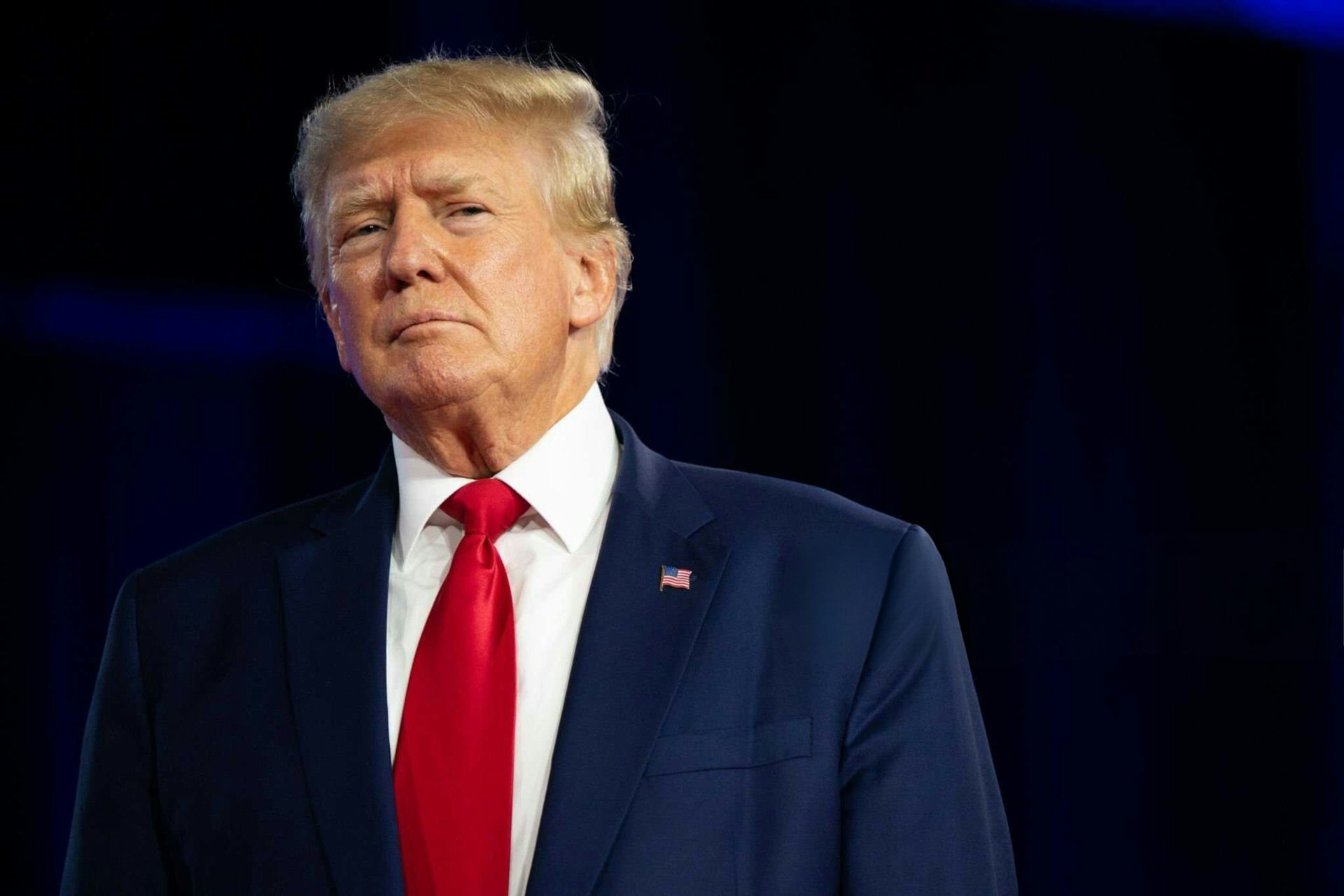The administration of new US president Donald Trump is reportedly considering various options to prevent Iran from being able to build a nuclear weapon. These include renegotiating a second nuclear deal, pursuing a policy of “maximum pressure” against Tehran by ramping up sanctions, and conducting airstrikes on Iranian nuclear facilities.
These discussions follow a report released in November 2024 by the UN’s nuclear watchdog, the International Atomic Energy Agency, which found Iran was dangerously close to enriching uranium to weapons-grade levels. The report also said that Iran was planning to install more than 6,000 new centrifuges to enrich more uranium.
There are, however, issues associated with each of the three options available to Trump.
1. Renegotiating the nuclear deal
The Joint Comprehensive Plan of Action, also known as the Iran nuclear deal, was negotiated under the administration of Barack Obama in 2015. Signed by Iran and several world powers, the deal placed restrictions on Iran’s nuclear programme in exchange for sanctions relief.
Iran was required to reduce its uranium stockpile by 98% and keep its level of uranium enrichment at 3.67%. This is significantly below the level needed to create a bomb.
However, Trump withdrew from the Iran deal during his first term as president, saying it was “horrible” and “one-sided”. He argued it lacked verification measures and did little to curb Iran’s support for terrorist groups. He also remarked that it failed to address the regime’s development of ballistic missiles capable of delivering nuclear warheads.
There is support for a renegotiated deal within various policy circles in Washington. But there has been a sharp increase in anti-American sentiment in Iran over recent years, which has reduced the likelihood of Tehran returning to the negotiating table.
Opinion polls released after Trump’s withdrawal from the Iran deal in 2018 showed that 70% of Iranians thought Tehran should not make any further concessions to the US for a future nuclear deal.
The assassination of Iranian military commander General Qasem Soleimani in January 2020 has further eroded Trump’s image in Tehran. Soleimani, who the Pentagon said was “responsible for the deaths of hundreds of American and coalition service members”, was killed by an American drone strike near Baghdad International Airport in Iraq.
This anti-American sentiment has been exacerbated through fiery speeches from Iran’s supreme leader, Ayatollah Ali Khamenei. He vowed “severe revenge” on those responsible for Soleimani’s death, and pronounced the US as “criminals”. In the past, Khamenei has also labelled Trump’s behaviour as “ugly and disgusting”.
2. Ramping up sanctions
Iran has a deep-rooted historical aversion to western and, more specifically, American hegemony. Since the Islamic Revolution of 1979, Iran has cemented a foreign policy outlook of viewing the “American-led hegemonic order” in terms of “global arrogance”.
This theme has been reflected by the Atomic Energy Organization of Iran, which controls Iran’s nuclear programme. In a social media post in 2020, it said Iranian nuclear scientists were “ready to face the coercion and unilateralism of the US government relating to the use of nuclear energy”.
Trump’s campaign of maximum pressure on Iran during his first term only strengthened Tehran’s thinking on American domination. Various Iranian officials condemned the US-led sanctions as “economic terrorism” and criticised Washington’s “thirst for war”.
The Iranian government has also repeatedly used the sanctions to garner public support for its leadership. In April 2024, Khamenei urged the Iranian people to view sanctions as an attempt to force Iran to comply with “colonising, imperialistic policies” and submit to “tyrannical demands”.
There are some signs that this messaging has worked. In a 2024 survey of 2,280 Iranian citizens, more than 69% of respondents expressed support for Iran’s pursuit of nuclear weapons. Imposing further sanctions is likely to deepen Iran’s opposition to the US, complicating efforts to renegotiate a nuclear deal.
The regime will probably be undeterred by the return of Trump’s maximum pressure campaign, even if it leads to new sanctions from other countries. Iran’s nuclear programme has demonstrated remarkable resilience over the years.
Tehran currently has more than five tonnes of enriched uranium at its disposal. And the US secretary of state, Antony Blinken, estimated in July 2024 that Iran is now capable of producing “one bomb’s worth of fissile material” in “about 12 days”.
3. Striking Iranian facilities
The final option being considered by Trump’s team is preventive airstrikes on Iranian nuclear facilities. This option would represent a departure from the longstanding US policy of containing Tehran through economic coercion. It would also probably result in a significant escalation of hostilities between the two countries.
To understand the risks associated with US military action in Iran, consider the events of the past few months. In October 2024, Israel carried out a series of airstrikes on Iran in retaliation for a barrage of Iranian strikes on its territory. This involved a strike on a nuclear weapons research facility near Tehran known as Taleghan 2.
The Iranian elites were quick to respond with several confrontational political statements. Ayatollah Khamenei vowed “a tooth-breaking response” against Israel and its ally, the US. His adviser, Kamal Kharrazi, stated that “if an existential threat arises, Iran will modify its nuclear doctrine”. Khamenei issued a fatwa, or religious ruling, against the use of nuclear weapons in 2003.
US strikes on Iranian soil are certainly not out of the question. In October 2024, Trump expressed support for Israeli retaliation against Iran. He urged Israel to strike Iran’s nuclear programme first, and “worry about the rest later”. Strikes like these only encourage Iran to break from its religious decree of not producing and using nuclear weapons.
Rather than debating hawkish policies to thwart Iran’s nuclear programme, I believe America’s approach should be to watch and wait. This would be key in assessing whether Iran, whose economy has been crippled by sanctions, leans towards China and Russia for trade, or comes back to the negotiating table for a second nuclear deal.



 Trump’s Name Appears on U.S. Institute of Peace Ahead of Rwanda–Congo Deal Signing
Trump’s Name Appears on U.S. Institute of Peace Ahead of Rwanda–Congo Deal Signing  Cuba Reaffirms Anti-Drug Cooperation as Tensions Rise in the Caribbean
Cuba Reaffirms Anti-Drug Cooperation as Tensions Rise in the Caribbean  China Urged to Prioritize Economy Over Territorial Ambitions, Says Taiwan’s President Lai
China Urged to Prioritize Economy Over Territorial Ambitions, Says Taiwan’s President Lai  Asia’s IPO Market Set for Strong Growth as China and India Drive Investor Diversification
Asia’s IPO Market Set for Strong Growth as China and India Drive Investor Diversification  Hong Kong Faces Low Turnout in “Patriots-Only” Election Amid Public Grief After Deadly Fire
Hong Kong Faces Low Turnout in “Patriots-Only” Election Amid Public Grief After Deadly Fire  Trump Backs Review of U.S. Childhood Vaccine Schedule After Hepatitis B Policy Change
Trump Backs Review of U.S. Childhood Vaccine Schedule After Hepatitis B Policy Change  Europe Confronts Rising Competitive Pressure as China Accelerates Export-Led Growth
Europe Confronts Rising Competitive Pressure as China Accelerates Export-Led Growth  Trump’s New U.S. Strategy Seeks to Deter China and Protect Taiwan
Trump’s New U.S. Strategy Seeks to Deter China and Protect Taiwan  U.S. Black Friday Online Spending Surges to $8.6 Billion, Boosted by Mobile Shoppers
U.S. Black Friday Online Spending Surges to $8.6 Billion, Boosted by Mobile Shoppers  Cuba Quietly Signals Openness to Post-Maduro Venezuela as U.S. Pressure Intensifies
Cuba Quietly Signals Openness to Post-Maduro Venezuela as U.S. Pressure Intensifies  U.S. Expected to Expand Travel Ban to More Than 30 Countries
U.S. Expected to Expand Travel Ban to More Than 30 Countries  Taiwan Opposition Criticizes Plan to Block Chinese App Rednote Over Security Concerns
Taiwan Opposition Criticizes Plan to Block Chinese App Rednote Over Security Concerns 
































